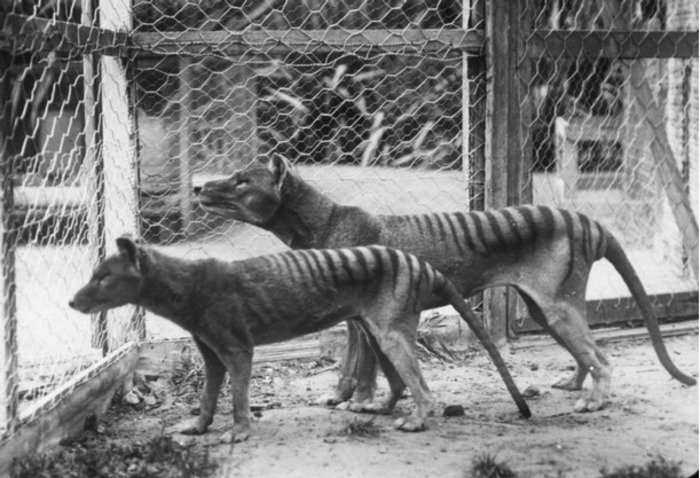Two Tasmanian Tigers in a zoo in Hobart, Tasmania, sometime before 1921.
ADELAIDE, Australia, Jan. 31 (UPI) -- Humans, not disease, were responsible for the extinction of the Tasmanian Tiger, Australia's iconic native predator, a University of Adelaide study says.
The study contradicts a widespread belief disease must have been a factor in the extinction of the creature, also known as a thylacine, a university release said Wednesday.
The thylacine was a unique marsupial carnivore found throughout most of the island state of Tasmania before European settlement in 1803, and then hunted to extinction until the last known thylacine, captured in the wild in 1933, died in a zoo.
"Many people, however, believe that bounty hunting alone could not have driven the thylacine extinct and therefore claim that an unknown disease epidemic must have been responsible," study leader Thomas Prowse said. "We tested this claim by developing a 'metamodel' -- a network of linked species models -- that evaluated whether the combined impacts of Europeans could have exterminated the thylacine, without any disease."
The model included direct effects of bounty hunting and habitat loss and indirect effects of a reduction in the thylacine's prey, kangaroos and wallabies, due to human harvesting, and competition from millions of introduced sheep, the researchers said.
"We found we could simulate the thylacine extinction, including the observed rapid population crash after 1905, without the need to invoke a mystery disease," Prowse said. "We showed that the negative impacts of European settlement were powerful enough that, even without any disease epidemic, the species couldn't escape extinction."















